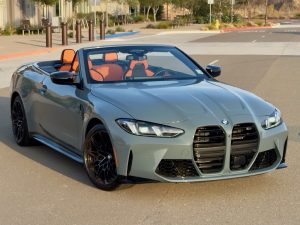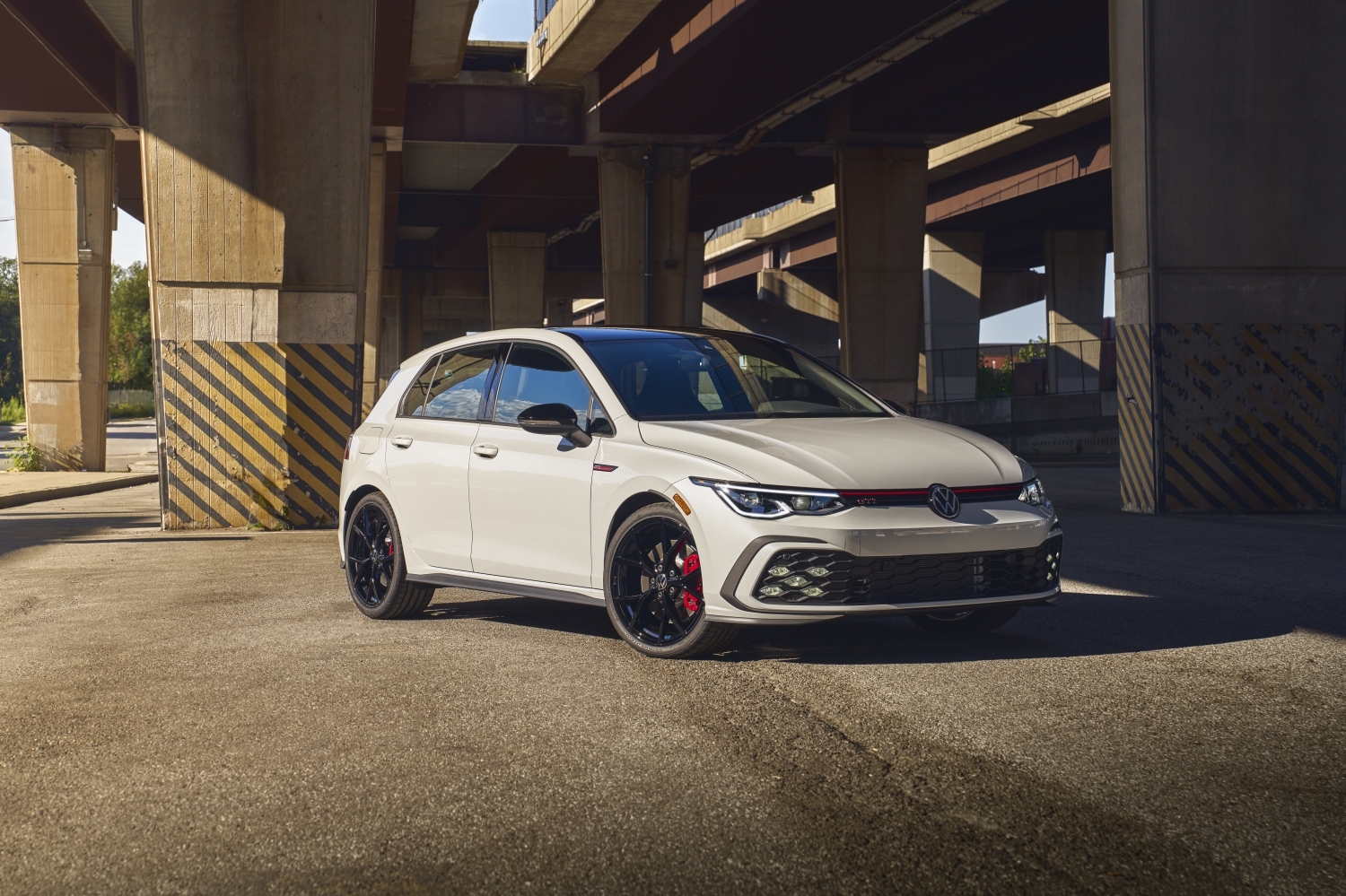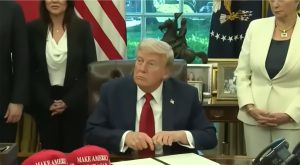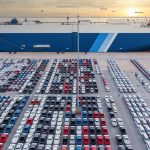U.S. and European trade negotiators reached the framework agreement on a new trade deal that will result in new, 15% tariffs on most European goods shopped to the States, including automobiles. That’s a sixfold increases from before and for buyers of products from brands like BMW, Mercedes-Benz, Fiat and Maserati, that could mean substantially higher prices. It could also hammer profits for those manufacturers – though U.S. negotiators hope the deal will see more production moved to the United States. More from Headlight.News.

European-made prducts, like this 2025 BMW M4 Competition Convertible, will face a sixfold increase in tariffs.
Less than a week after announcing a trade deal with Japan, U.S. and European Union negotiators confirmed they had reached the framework of an agreement that could resolve the trade dispute touched off by Pres. Donald Trump earlier this year.
As things stand, most European imports would not face a 15% tariff when entering the U.S., up from 2.5% before – though some goods, such as aerospace components and semiconductor equipment, would be exempt. On the other hand, a 50% tariff on European-made steel and aluminum will remain in effect. And that remains a problem for U.S. automakers. But EU-based car companies will now have to figure out how to handle a sixfold increase in their tariffs, something that could add thousands – in some cases tens of thousands – of dollars to the cost of sending vehicles to the U.S.
Echoing what he said about the U.S.-Japan trade deal barely a week ago, Trump called the EU agreement “the biggest deal ever made.” He added that it “was a very interesting negotiation. I think it’s going to be great for both parties.”
A great deal
If nothing else, the settlement, when finalized, will “bring predictability that’s very important for our businesses on both sides of the Atlantic,” said European
Commission President Ursula von der Leyen, who met with the U.S. president during his visit to Scotland over the weekend.
There’s little doubt that EU goods will cost more, but the final number is well below the 25% tariff previously announced, and Trump had signaled he was about to raise the figure to 30%.
“The good news” for automakers “is that it’s settled,” agreed Stephanie Brinley, principal auto analyst at S&P Global Mobility. “Even if it’s a higher tariff, everyone knows what’s to expect.”
Higher costs…
But what manufacturers and buyers alike can expect are higher costs. Tariffs are not paid for by the country of origin, unlike the scenario Trump has repeated on a number of occasions. Instead, they will be spread among both sellers and buyers.
Tariffs are based on what are essentially wholesale costs, rather than the final MSRP. That’s typically around 10% less than sticker, according to several industry experts. On a low-end model imported from Europe, like a Volkswagen Golf GTI – base retail price $33,670 – that would be around $30,000. Prior to the trade war, the tariff was be roughly $750. Going forward, however, it will be around $4,500.
On the $98,745 BMW 7-Series, tariffs were around $2,250 under the old trade regime. That will jump to $13,500. And when you start talking exotic products from a manufacturer like Ferrari, Lamborghini, Maserati or Bugatti, some products could see new tariffs reaching $50,000, $75,000, even more than $100,000.
More Tariff News
- Japanese Auto Imports Face 15% Tariffs Under Trade Deal
- GM Net Income Crashes Under Weight of Tariffs
- UAW Says it Was Burned by Trump on Tariffs
…Lower margins
Though tariff costs will go up that doesn’t necessarily translate into a similar price increase for consumers, stressed Brinley. “The cost for the import will go up. How automakers manage that is an open question.”
She and other industry-watchers stress that manufacturers like VW, Mercedes and BMW operate in a highly competitive environment. They can’t simply pass on tariffs without weighing the potential impact – such as reduced sales at a time when auto buyers have already begun pushing back against record-high prices.
As we’ve already been seeing, many automakers are swallowing higher tariff costs – or at least some of those costs – in order to maintain sales levels, even if that impacts profits and margins. Last week, Stellantis blamed higher tariff costs for contributing to its losses during the first half of this year. And General Motors again warned tariffs could reduce its earnings by as much as $5 billion for all of 2025.
While the final language of a deal has yet to be completed, the German Association of the Auto Industry – known as the VDA – warned it is “clear that the US tariff of 15 per cent on automotive products will cost German automotive companies billions annually and place a burden on them in the midst of their transformation.”
A continued “negative impact”
ACEA, the French acronym for the European Automobile Manufacturers Association, said the trade deal “will continue to have a negative impact not just for industry in the EU but also in the U.S.”
American manufacturers rely on a significant number of parts and components in every vehicle they produce. And, even though S&P and other analysts eventually expect 15% tariffs to become the U.S. norm for all trade partners, that will raise costs on all automobiles. According to Cox Automotive, the typical vehicle sold in the U.S. came in around $49,000 in June, just short of an all-time record. Cox and other industry-trackers anticipate that number could rise by $2,000 or more. The final number depends on how much of the new tariffs automakers pass onto consumers.
It also depends on whether the Trump trade war plays out as the administration has promised, by bringing more manufacturing to the U.S. Several manufacturers have already announced plans to boost American production while also seeking to raise their use of U.S.-made parts, components and raw materials. But that won’t be an overnight solution, cautioned Sam Fiorani, chief analyst at AutoForecast Solutions. Setting up new assembly plants, in particular, could take several years, at the earliest.













Make it where you sell it!
Henry,
I’m thus assuming you are okay with ending BMW Spartanburg as a major auto export source, halting exports of Mustangs and more. Correct?
Paul E.
Henry, cars are so much more complicated than that. Plus, you know what country exports more BMWs than any other? That’s right! The USA.
As the Wall Street Journal put it, this is the stupidest trade war in history. It’s making everyone poorer.
Henry, cars are so much more complicated than that. Plus, you know what country exports more BMWs than any other? That’s right! The USA.
As the Wall Street Journal put it, this is the stupidest trade war in history. It’s making everyone poorer.